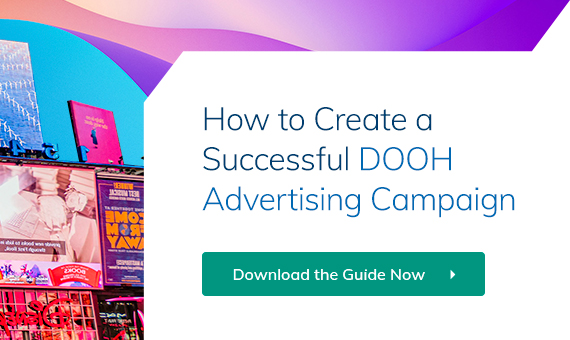DOOH represents an antidote both to consumers already growing tired of online advertising and the marketers and advertisers trying to engage them.
The average adult is now exposed to somewhere between 6,000 and 10,000 digital ads per day. Little wonder, then, that a February 2021 article in the Harvard Business Review should begin: “the effectiveness of digital ads is wildly oversold.” If this is the case, how can digital out of home cut through where traditional online advertising can’t?
Surely, if everybody’s online, then online advertising is the best way to reach consumers.
Not so fast.
The truth is that today, fewer and fewer people are engaging with online ads. The trouble, of course, is the phenomenon known as “banner blindness” – a term used to describe the ineffectiveness of online banner advertisements due to their oversaturation. People may be exposed to thousands of online ads every day – but the vast majority either willfully or unconsciously ignore them.
According to one study, 86% of people can’t remember the last banner ad they saw. In fact, many internet users are positively irritated by intrusive online ads and take decisive action to block them. Up to 41% of American internet users report using ad blockers – and they’re popular across all age groups.
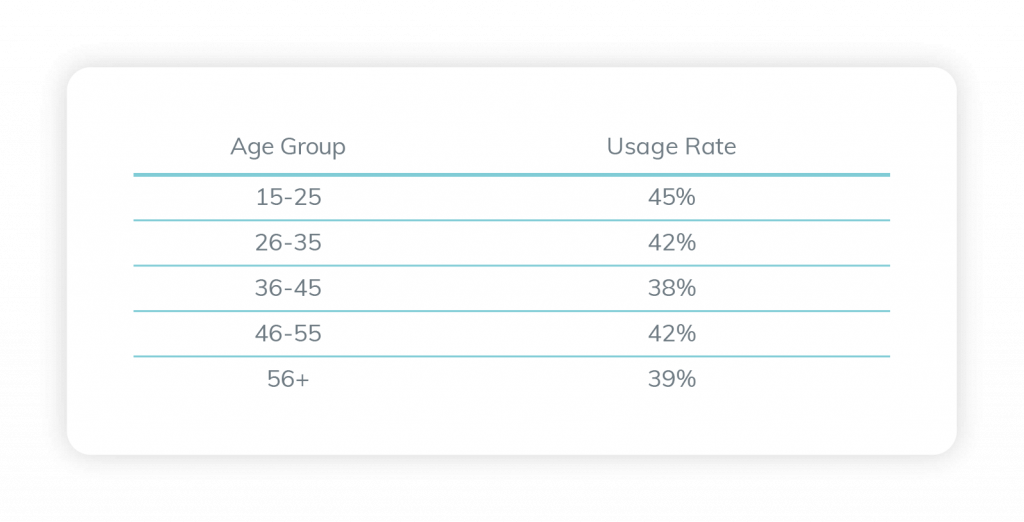 (Image source: backlinko.com)
(Image source: backlinko.com)
With consumers either unconsciously ignoring or purposely blocking online ads, it’s hardly a wonder that click through rates (CTRs) have fallen into a sharp decline over the years. Way back in 1997, the CTR for online banner ads stood at a respectable 12%. By 2016, this had fallen to 0.72% – then to 0.35% in 2019. Today, according to Google DoubleClick figures, the overall display ad CTR is just 0.05%
What Does DOOH mean?
There is another way to reach consumers through digital media, but it’s not online.
Outdoor advertising has gone digital. Known as digital out of home (or DOOH), DOOH advertising is the practice of using digital displays to deliver advertising content in public spaces.
Thousands of digital screens are now installed across the US – on digital billboards next to freeways and highways, in elevators and vehicles, on street furniture, in points of care, and in shopping malls, airports and entertainment venues.
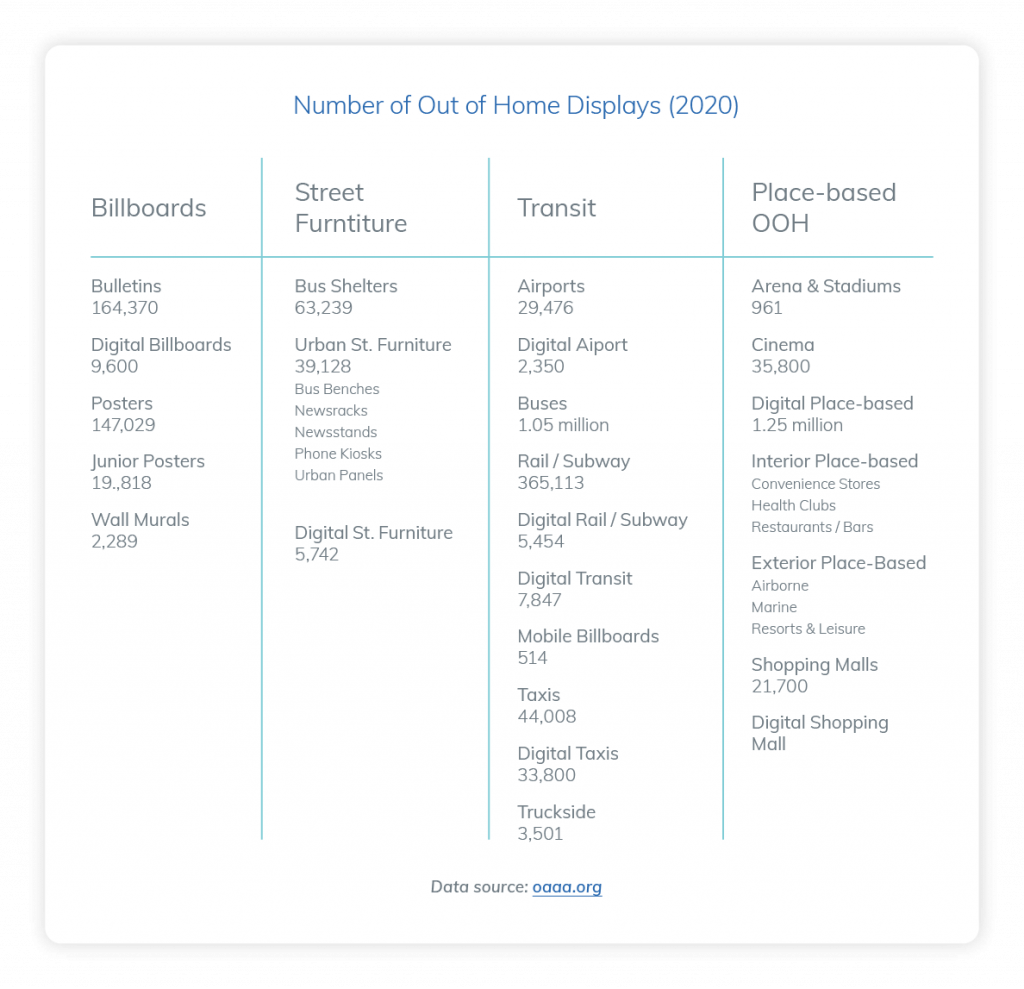 (Image source: oaaa.org)
(Image source: oaaa.org)
Benefits of Digital Out of Home Advertising
Does DOOH work?
Undoubtedly.
The latest Digital OOH Advertising Report from Nielsen and the Outdoor Advertising Association of America (OAAA) finds that DOOH not only produces high levels of awareness and recall, but prompts engagement and consumer action as well.
Some highlights from the report include:
Among the 62% of consumers who notice digital billboards:
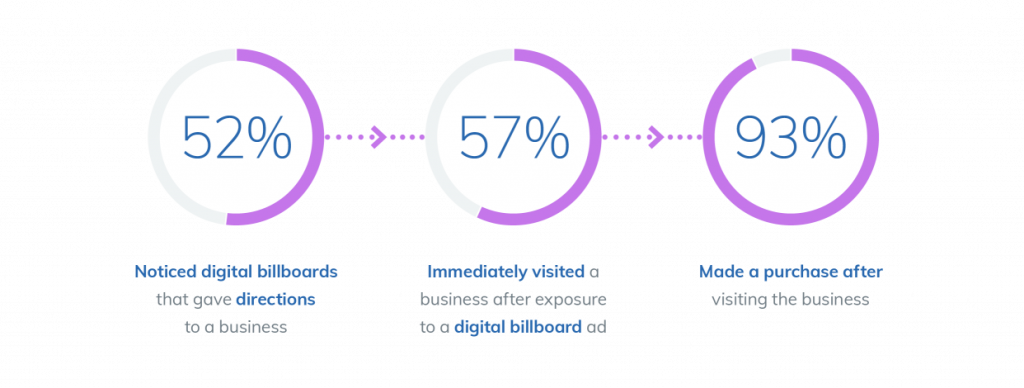 (Image source: oaaa.org)
(Image source: oaaa.org)
Among the 49% of consumers who notice digital street-level OOH:
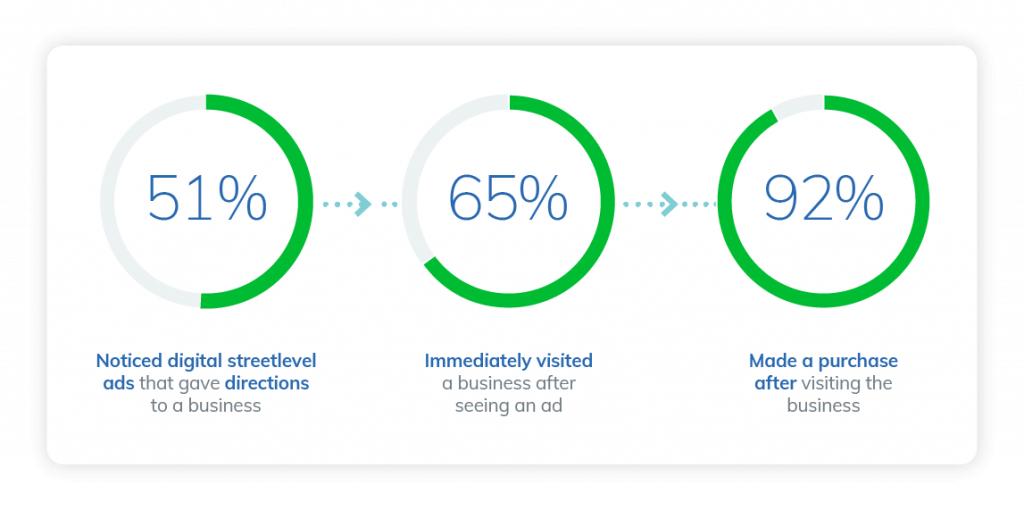 (Image source: oaaa.org)
(Image source: oaaa.org)
Among the 50% of consumers who notice digital place-based OOH:
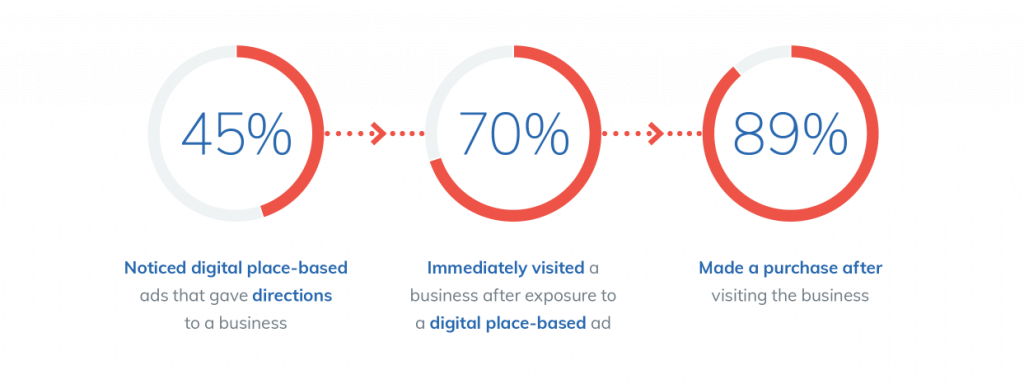 (Image source: oaaa.org)
(Image source: oaaa.org)
What Is Programmatic DOOH?
The advantages of DOOH are clear-cut on their own. However, digital out of home advertising becomes even more valuable once programmatic capabilities are brought into the equation.
Programmatic DOOH – pDOOH, for short – refers to the automated buying, selling and delivery of DOOH advertising using a specialized platform.
pDOOH utilizes real-time data from a variety of sources including, but not limited to, location based mobile data which builds a comprehensive picture of where and when consumers are spending their time. The technology then turns these behavioral trends into actionable data, allowing advertisers to target specific audiences across digital signage in the real world.
Advertisers set demographic and other conditions for their pDOOH campaigns – such as weather conditions, time of day, day of week, etc. – as well as a campaign budget and duration. Most importantly, they can handpick their DOOH screens situated in locations where the target audience is most likely to be, bid for space on those screens and automatically start when all conditions are met.
Programmatic DOOH unleashes a whole new world of data-driven advertising potential for brands and marketers. Let’s consider the benefits.
Programmatic DOOH – What Are the Benefits?
1. pDOOH Is Contextually Relevant
Programmatic DOOH allows advertisers to buy ads based on specific criteria. You choose the context that triggers your purchase of the ad – be it footfall, traffic, temperature, time of day, or a range of other options. This allows you to think about OOH advertising from a whole new data-driven perspective. Indeed, programmatic DOOH is outdoor advertising made smart.
2. Programmatic DOOH Leverages Artificial Intelligence
Thanks to in-built artificial intelligence and machine learning, pDOOH allows advertisers to change their message depending on exactly who is passing the DOOH display and what they’re doing. If you’re selling automotive brands, you can set your advert to appear to commuters driving competitor brands. If you’ve got a coffee shop, you can set an ad to display at certain hours of the day. Ads can also be weather-reactive – hot drinks on a cold day, cold drinks on a hot day – or based on demographics or many other data triggers whether it is 1st or 3rd party data.
3. pDOOH Maintains a Dialogue with Other Channels
Programmatic DOOH does not have to advertise in isolation. It can form an effective role in a multi-channel marketing campaign. For example, a QR code on a bus shelter or a digital panel on a busy side-walk, could translate to a meal discount for a nearby restaurant. Or a unique personal access code displayed on the digital screen might provide a targeted pedestrian with access to discounts via your company’s mobile app.
The OAAA’s study reveals just how effective these types of campaign can be. 69% of consumers who noticed digital street-level OOH went on to visit the advertiser’s website, social media page, or store – and 62% engaged in mobile device actions.
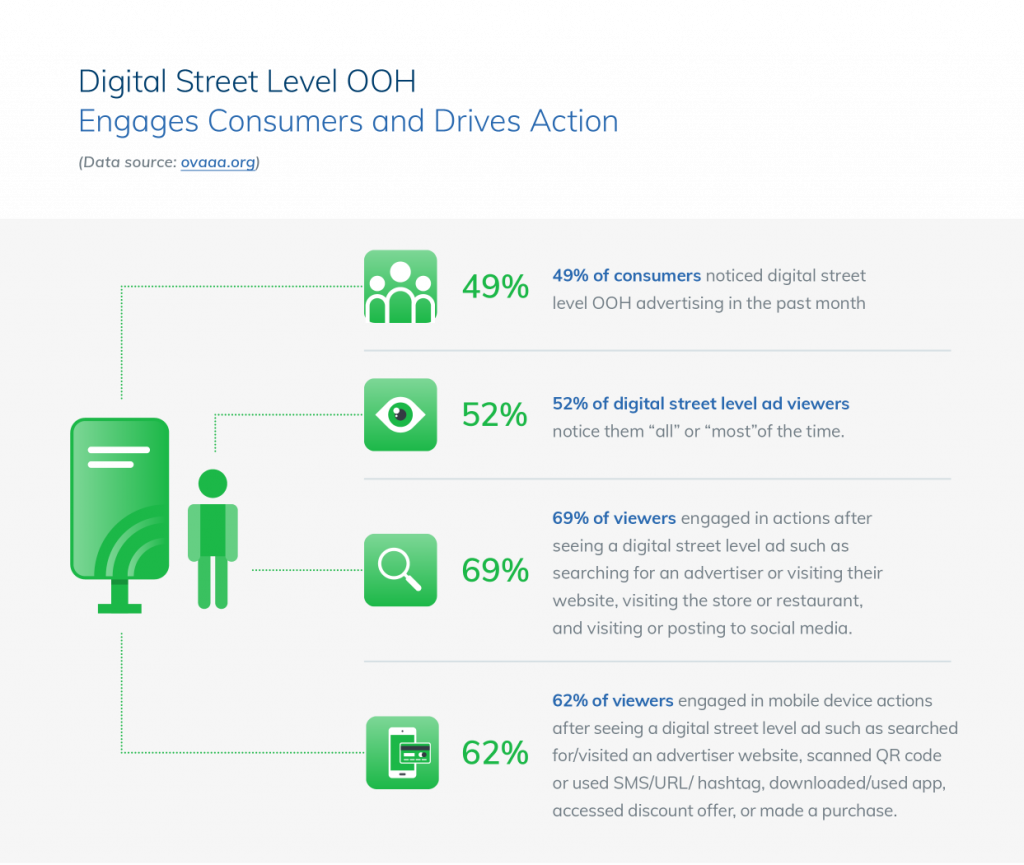
(Image source: oaaa.org)
4. Programmatic DOOH Reaches Your Target Audience in Real Time
While traditional OOH advertising was location specific, programmatic DOOH is audience specific. The more criteria you set for your campaign, the more accurately you can reach your target audience – be it couples, families, groups of people on a night out – in real time.
The options provided by pDOOH empower you to think about your target audience more granularly than ever before.
This ease of purchase also opens up digital out-of-home networks to smaller businesses that would not usually have the resources to purchase digital out-of-home media.
Make pDOOH Part of Your Campaign
The Neuron is at the forefront of innovation in programmatic DOOH.
We provide a broad range of tailored solutions for buyers in the advertising space using precision data targeting.
Leverage our experience and cutting-edge platform to ensure your campaign generates a strong ROI. We automate the buying process, facilitate direct connections with DOOH media owners and provide ahead-of-the-curve behavioral analytics tools to help you get the most out of your DOOH campaigns.
Get in touch today to find out more.

